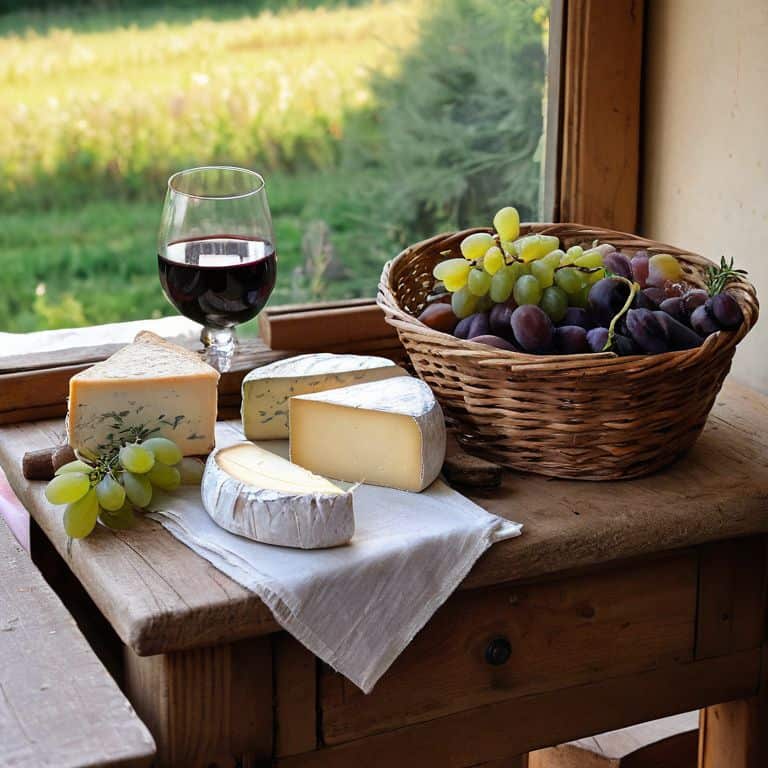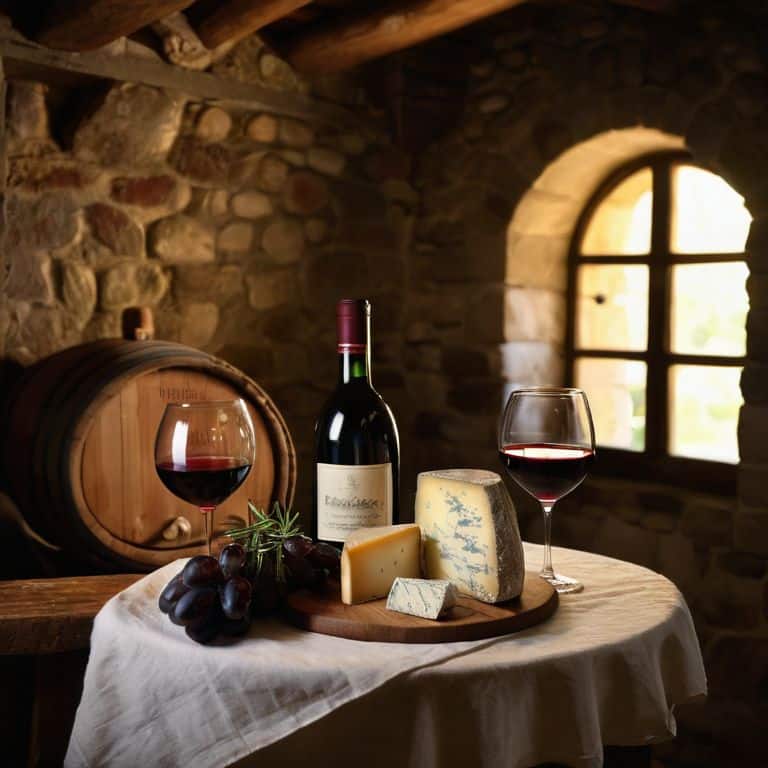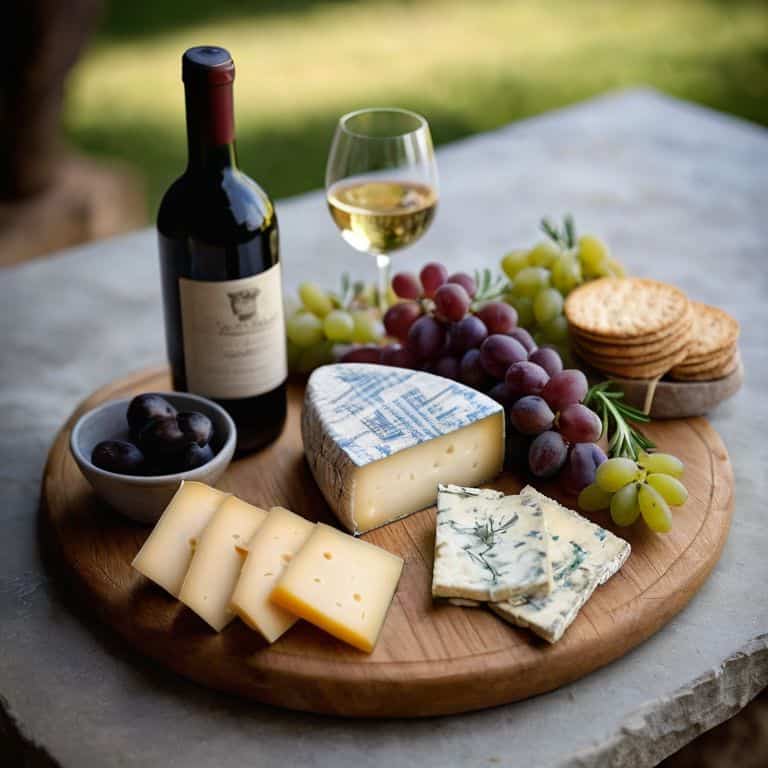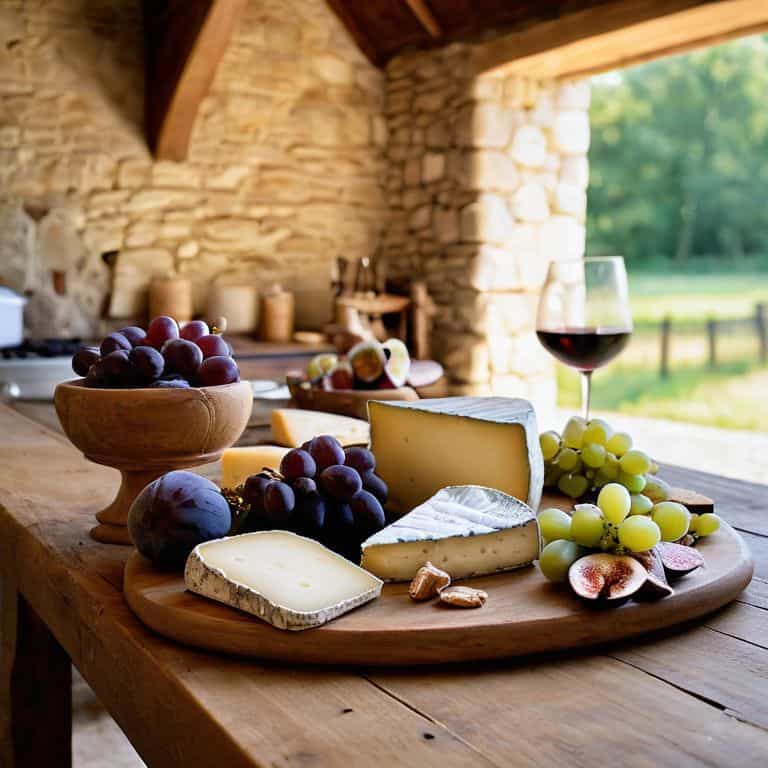As I sat on a worn, wooden stool at a bustling French market, I realized that the world of a guide to french cheeses for beginners is often shrouded in mystery. Many believe that navigating the vast array of French cheeses requires a PhD in fromage, but I’m here to tell you that’s simply not true. The truth is, understanding and appreciating French cheeses is more about embracing the rich flavors and traditions of the countryside than it is about memorizing a list of obscure names.
In this article, I’ll share my personal journey of discovering the hidden gems of French cheeses, from the creamy brie to the pungent epoisses. You’ll learn how to decipher the basics of a guide to french cheeses for beginners, including how to choose the perfect cheese for your next dinner party, and how to pair it with the perfect wine and accompaniments. My goal is to provide you with honest, no-hype advice that will make you feel like a seasoned fromager, even if you’re just starting out. So, let’s embark on this culinary adventure together and uncover the secrets of French cheeses, one delicious bite at a time.
Table of Contents
Guide Overview: What You'll Need

Total Time: 1 hour 30 minutes
Estimated Cost: $20 – $40
Difficulty Level: Easy
Tools Required
- Cheese Board (for serving)
- Wine Key (for wine pairings)
- Knife (for cutting cheese)
- Measuring Cups (for portion control)
Supplies & Materials
- Brie Cheese soft, creamy cheese
- Camembert Cheese earthly, mushroomy flavor
- Roquefort Cheese strong, pungent blue cheese
- Baguette (for serving with cheese)
- Fresh Fruit (for pairing with cheese)
Step-by-Step Instructions
- 1. First, let’s start with the basics: understanding the main categories of French cheeses. You see, France is home to over 400 types of cheese, so it’s essential to break them down into groups to make sense of it all. I like to think of it as a cheese journey, where you begin with the mild and work your way up to the strong. We’ll explore the main categories, from soft-ripened cheeses like Brie and Camembert to the blue cheeses like Roquefort.
- 2. Next, we’ll delve into the world of soft-ripened cheeses. These are the ones that will make you fall in love with French cheese, I guarantee it. To get started, you’ll need to select a few essential soft-ripened cheeses, such as Brie, Camembert, or Bucheron. When shopping for these cheeses, look for a white rind and a creamy interior – that’s when you know you’ve got a winner. I remember trying my first Brie in a small village in Normandy; it was love at first bite.
- 3. Now that we have our soft-ripened cheeses, it’s time to learn how to store them properly. This is crucial, as it will affect the flavor and texture of your cheese. For soft-ripened cheeses, you’ll want to store them in a cool, dry place, such as a cheese cave or a cheese fridge. If you don’t have either of those, don’t worry – your regular fridge will do. Just make sure to wrap the cheese in parchment paper or aluminum foil to maintain humidity.
- 4. With our cheese stored properly, it’s time to move on to the blue cheeses. These are the bold and pungent ones that will add a kick to your cheese platter. When it comes to blue cheeses, you’ll want to start with a mild one, such as Gorgonzola or Sainte-Maure de Touraine. As you become more adventurous, you can move on to stronger blues like Roquefort or Bleu d’Auvergne. I recall trying my first Roquefort in a small café in Paris – it was a flavor explosion that left me wanting more.
- 5. Now that we’ve covered the basics of French cheese, it’s time to learn how to pair them with other foods. This is where the magic happens, my friends. For soft-ripened cheeses, you’ll want to pair them with fresh fruit or crackers to balance out the richness. For blue cheeses, you can pair them with nuts or dried fruit to complement their bold flavors. And don’t forget about the wine – a dry white wine like Sauvignon Blanc or a light red wine like Pinot Noir will complement your cheese perfectly.
- 6. As we continue our cheese journey, it’s essential to learn about the different regions of France and their specialty cheeses. From the creamy cheeses of Normandy to the tangy cheeses of the Alps, each region has its unique flavor profile. Take some time to research the different regions and their cheeses – you might be surprised at the variety and complexity of French cheese. I’ve had the pleasure of traveling through France, sampling cheeses from each region, and I can tell you that it’s a culinary adventure like no other.
- 7. Finally, don’t be afraid to experiment and try new cheeses. French cheese is all about exploration and discovery, so don’t be shy about trying new types and combinations. Visit your local cheese shop, attend a cheese tasting, or try making your own cheese at home. The world of French cheese is vast and exciting, and I’m thrilled to have you along on this journey. Remember, the most important thing is to have fun and enjoy the process of learning about these incredible cheeses.
A Guide to French Cheeses

As I wandered through the charming villages of France, I discovered that french cheese and wine pairings are an art form. The locals would often share with me their favorite combinations, like a rich Camembert with a glass of dry white wine. I learned that the key to a perfect pairing lies in balancing the flavors and textures of the cheese with the nuances of the wine. For instance, a creamy Brie is beautifully complemented by a crisp Sauvignon Blanc, while a nutty Comté is paired perfectly with a full-bodied red wine.
When it comes to creating a french cheese platter, the possibilities are endless. I recall a memorable evening in Paris, where I stumbled upon a quaint fromagerie that offered an assortment of artisanal cheeses, each with its own unique history of french cheese production. From the pungent aroma of Époisses to the creamy delight of Pont l’Évêque, every cheese told a story of tradition and terroir. As I sampled each variety, I began to appreciate the french cheese tasting notes, which revealed the subtle differences in flavor and texture.
To fully appreciate the richness of French cheese, it’s essential to understand the french cheese serving etiquette. I remember being invited to a dinner party in Lyon, where the hostess carefully presented a selection of cheeses, each at the perfect temperature and accompanied by a basket of fresh bread and fruit. As we savored each cheese, she shared stories of their origins and the art of french cheese production, which added a deeper layer of appreciation to the experience.
French Cheese and Wine Pairings
As I wandered through the vineyards and fromageries of France, I discovered the magic of pairing French cheese with wine. A perfectly balanced combination can elevate the flavors of both, creating an unforgettable experience. I recall a warm summer evening in Bordeaux, where I savored a rich, creamy Camembert alongside a glass of chilled Sauvignon Blanc – the crisp acidity cut through the richness, leaving me wanting more.
From the Loire Valley to Provence, each region boasts its own unique pairing traditions. A fruity Sauternes pairs exquisitely with the salty, nutty flavors of Roquefort, while a bold, full-bodied Bordeaux complements the earthy undertones of Pont l’Évêque. Experimenting with these pairings will transport your taste buds to the French countryside, where every bite and sip tells a story of tradition and terroir.
Introduction to French Cheese Types
As I wandered through the charming markets of rural France, I discovered a world of cheeses that went far beyond the famous Brie and Camembert. From the creamy richness of Pont l’Évêque to the nutty, slightly sweet flavor of Comté, each region boasted its own unique varieties. I recall a grandmother in the Alsace region teaching me how to make a traditional Munster cheese, its white rind and creamy interior a perfect reflection of the area’s Germanic influences.
From soft and spreadable to firm and aged, the diversity of French cheeses is a testament to the country’s rich culinary heritage. Whether it’s the pungent aroma of Époisses or the delicate taste of Crottin de Chavignol, each cheese tells a story of the people and places that crafted it. As we delve into the world of French cheeses, I invite you to join me on this gastronomic journey, exploring the flavors, traditions, and stories behind these incredible cheeses.
Savoring the Flavors of France: 5 Essential Tips for Beginners
- Start with the Classics: Begin your French cheese journey with iconic varieties like Camembert, Brie, and Roquefort to understand the foundation of French fromagerie
- Explore Beyond the Familiar: Venture into lesser-known cheeses like Pont l’Évêque, Crottin de Chavignol, or Bleu d’Auvergne to discover the diverse richness of French cheese-making
- Mind the Pairings: Remember that French cheese and wine are meant to be paired in harmony – a dry wine for soft cheeses and a sweet wine for pungent ones is a good rule of thumb
- Texture Matters: Don’t be afraid to mix and match different textures – creamy, soft, hard, and blue – to create a well-rounded cheese board that will delight your senses
- Visit Local Markets: Whenever possible, visit local markets or fromageries to taste cheeses at their peak freshness and learn from the artisans who craft them, just as I do on my travels
Savoring the Flavors of France: 3 Key Takeaways
From creamy Brie to pungent Époisses, understanding the diverse categories of French cheeses is crucial for any beginner, and I’ve found that learning from the grand-mères of France has been the best way to grasp these nuances
Pairing the right wine with the right cheese can elevate any dining experience – I recall a memorable evening in Bordeaux where a glass of rich Merlot perfectly complemented a platter of bold, aged cheeses
Whether you’re exploring the charming fromageries of Paris or attempting to replicate French culinary magic in your own kitchen, the journey of discovering French cheeses is as much about the people and their stories as it is about the flavors and techniques
Savoring the Flavors of France

The beauty of French cheese lies not just in its taste, but in the stories of the people and places that craft it – to truly understand fromage, you must first understand the French philosophy of slowing down to savor life’s simple pleasures.
Marco Bianchi
Savoring the Flavors of France
As I conclude this journey through the world of French cheeses, I hope you’ve gained a deeper appreciation for the rich diversity of flavors and textures that France has to offer. From the creamy richness of Brie to the pungent aroma of Époisses, each cheese has its own unique character and story to tell. By understanding the different types of French cheeses, such as soft-ripened, blue, and washed-rind, you’ll be better equipped to navigate the cheese board and discover your own favorite varieties. Additionally, learning about French cheese and wine pairings will elevate your dining experiences and add a touch of sophistication to any gathering.
As you embark on your own culinary adventures, remember that the true magic of French cheese lies not just in its taste, but in the cultural heritage and tradition that surrounds it. So, go ahead and indulge in the experience, whether it’s visiting a fromagerie in Paris or experimenting with new recipes in your own kitchen. Let the flavors of France transport you to a world of wonder and discovery, and don’t be afraid to get a little messy and try something new. For in the end, it’s the journey, not the destination, that makes the discovery of French cheeses such a delightful adventure.
Frequently Asked Questions
What are some common mistakes to avoid when pairing French cheese with wine?
The art of pairing French cheese with wine – it’s a delicate dance, my friends. To avoid common pitfalls, remember that soft cheeses like Brie and Camembert love a dry white wine, while harder cheeses such as Comté and Beaufort pair nicely with a full-bodied red. Don’t overthink it, but do avoid pairing strong blues with delicate wines, a mistake I’ve made on my own culinary adventures.
How do I properly store French cheese to preserve its flavor and texture?
Storing French cheese is an art, my friends! I learned from a charming fromagerie in Paris that the key is to keep it cool, dry, and wrapped in breathable paper or cloth. Think of it as giving your cheese a gentle hug, allowing it to breathe and retain its je ne sais quoi.
Are there any regional French cheeses that are particularly well-suited for beginners to try?
My friends, let me tell you, the regions of France are a treasure trove for beginners! I recommend trying the creamy Camembert from Normandy or the nutty Comté from Franche-Comté. And don’t miss the iconic Tomme de Savoie from the Alps – these cheeses are approachable, delicious, and will give you a taste of la vie en France!
